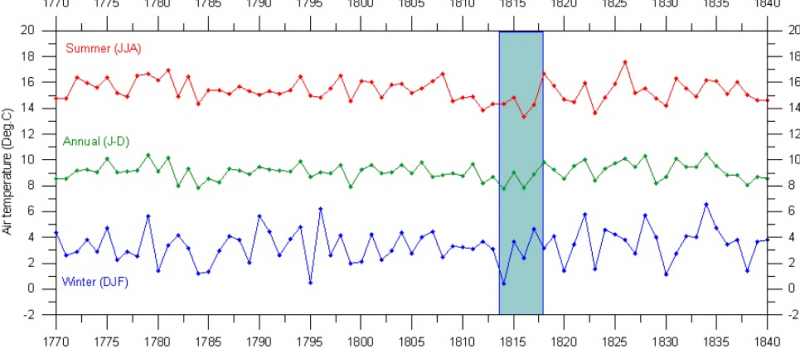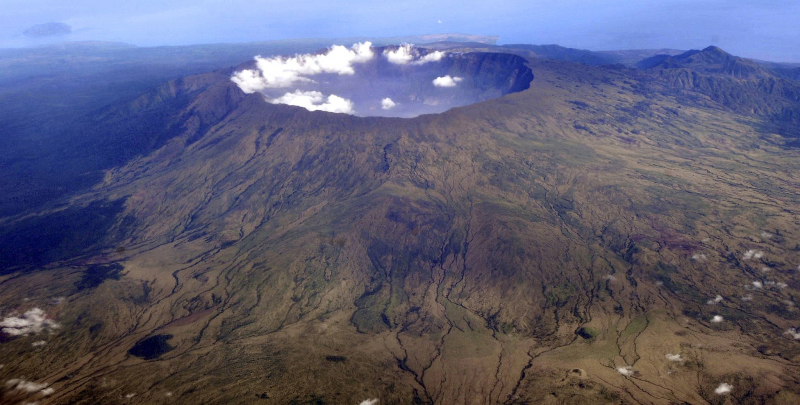It lowered global temperatures by 0.4–0.7 °C (0.7–1.3 °F)
One of the interesting facts about the 1815 eruption of Mount Tambora is that it lowered global temperatures by 0.4–0.7 °C (0.7–1.3 °F). A volcanic winter resulted from the eruption. Global temperatures fell by 0.53 °C (0.95 °F) during the summer of 1816 in the Northern Hemisphere. This extreme cooling directly or indirectly resulted in the deaths of 90,000 people. The most prominent cause of this climate anomaly was the eruption of Mount Tambora. While additional eruptions occurred in 1815, Tambora was classified as a VEI-7 eruption with a column 45 km (148,000 ft) tall, dwarfing all others by at least one order of magnitude.
Average worldwide temperatures fell by 0.4 to 0.7 °C (0.7 to 1.3 °F), causing serious agricultural concerns around the world. Frosts were observed in the upper elevations of New Hampshire, Maine, Vermont, and northern New York on June 4, 1816. Snow fell in Albany, New York, and Dennysville, Maine on June 6, 1816. On June 8, 1816, the snow cover in Cabot, Vermont was still 46 cm (18 in) deep. Such circumstances persisted for at least three months, destroying the majority of agricultural crops in North America. During the summer, Canada faced a significant cold. From June 6 to 10, 1816, 30 cm (12 in) of snow fell in Quebec City.
The year 1816 was the second-coldest in the Northern Hemisphere since roughly 1400, while the 1810s were the coldest decade on record. That was the result of Tambora's 1815 eruption, as well as a possible VEI-6 eruption in late 1808. During the summers of 1816, 1817, and 1818, the surface temperature anomalies were 0.51 °C (0.92 °F), 0.44 °C (0.79 °F), and 0.29 °C (0.52 °F), respectively. Winter was also harsher in parts of Europe.
The magnitude of the volcanic eruption will influence the impact on temperature and other chemical processes, but a change will be detected even in the most remote places. Volcanoes spew carbon dioxide (CO2), water, hydrogen, sulfur dioxide (SO2), hydrogen chloride, hydrogen fluoride, and a variety of other gases when they erupt. Meronen and colleagues (2012) CO2 and water are both greenhouse gases, accounting for 0.0394 and 0.4 percent of the atmosphere, respectively. Their modest size conceals their important significance in capturing solar insolation and reradiating it back to Earth.










